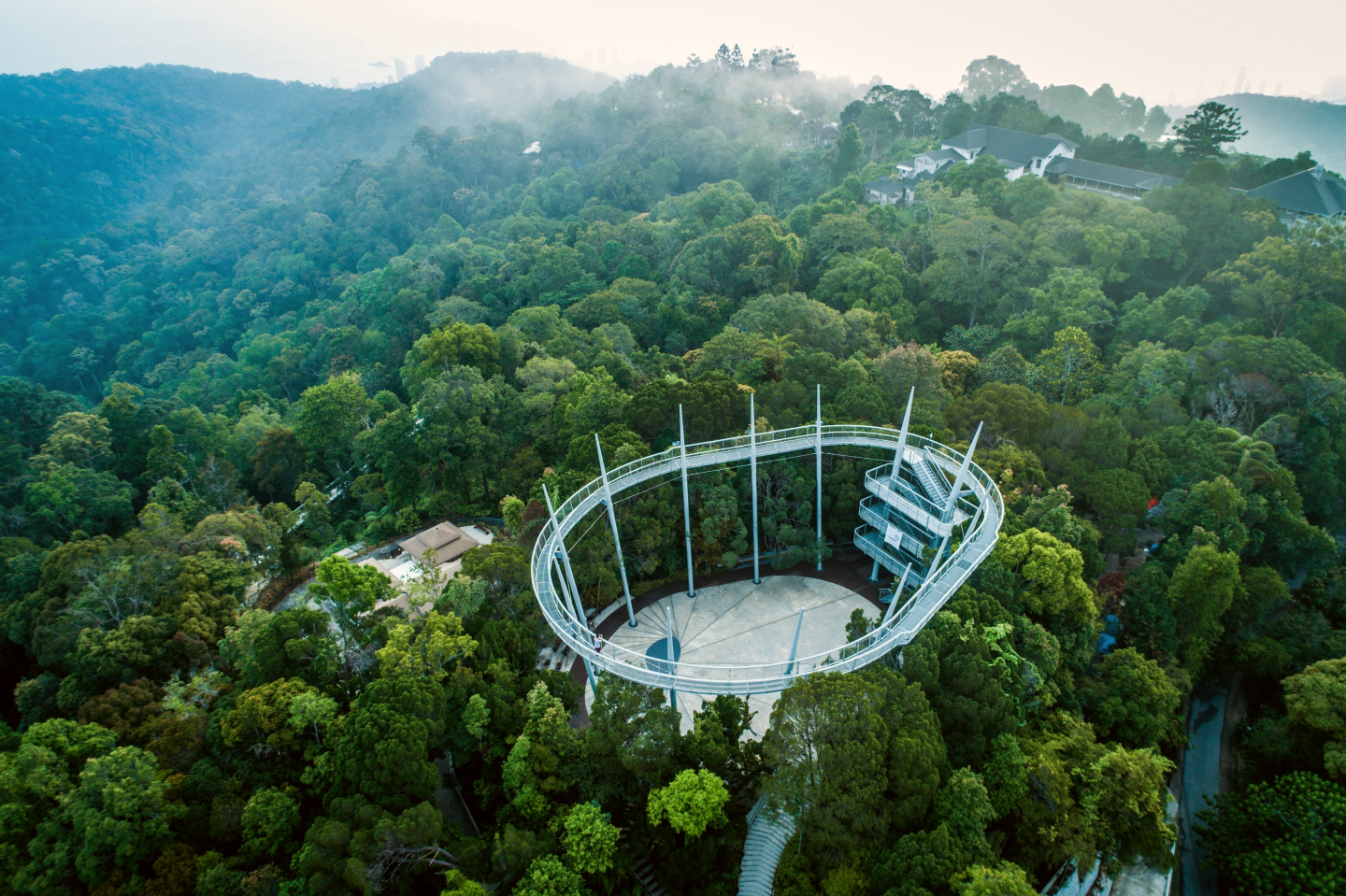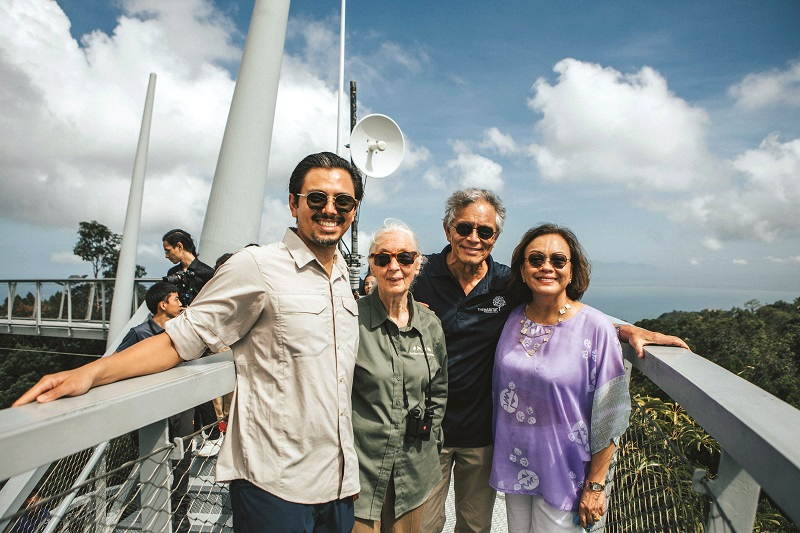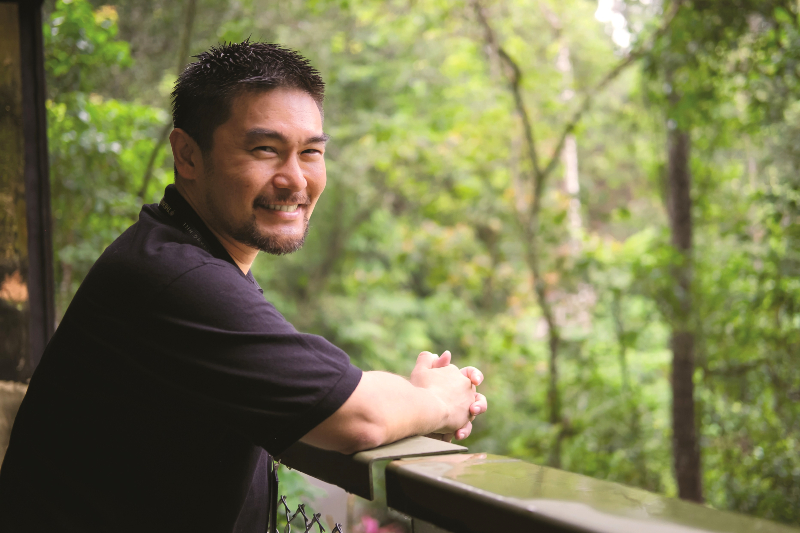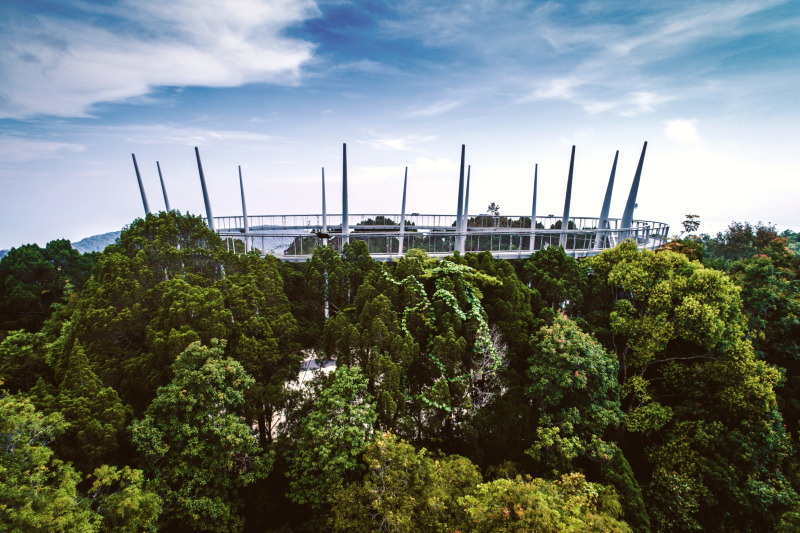
The biosphere reserve covers 12,481ha of the island, essentially from Penang Hill down to the Teluk Bahang National Park and beyond (All photos: The Habitat Penang Hill)
By putting nature first and focusing on people and the planet, The Habitat Penang Hill hopes to show that ecotourism can be sustainable.
Penang Hill may not be alive with the sound of music, but it certainly has the potential to fill the state coffers through ecotourism and make hearts burst into song over verdant slopes and views of vales.
There is more to sing about at The Habitat, a 7.3ha eco-park hugging the fringe of Government Hill, the virgin jungle reserve that is one of six peaks forming what is commonly known as Penang Hill.
The Habitat is built on four pillars — sustainable tourism, conservation, research and education — grounded on a family’s love for the hills and deep appreciation of the ancient rainforest at their doorstep. The Cockrells, long-time residents of Penang and Penang Hill, have a home among the 30 privately owned historic bungalows on the latter. This affinity explains their efforts to conserve the biodiversity of their surroundings and show how man can co-exist with nature.
mr_reza_cockrell_dr_jane_goodall_mr_and_mrs_cockrell_1.jpg

In 2010, Harry Cockrell’s Creative Quest won the bid to build The Habitat Penang Hill in response to the state government’s call to start an ecotourism venture. The initial plan was to build a nature trail and canopy walk, but Cockrell, an American raised in Taiwan — together with his Malaysian wife Rosna Yusoff, who grew up in Penang, and their eldest son Reza, who lives in Hong Kong but says his heart is in Penang — wanted to do more.
In 2016, Habitat’s 1.6km Nature Trail — originally built by the British to maintain the drain that ran the entire length of the trail for water catchment purposes — was opened to the public. The Curtis Crest Tree Top Walk followed a year later. In 2018, the 230m Langur Way Canopy Walk, a two-span ribbon bridge that sits 40m above the forest floor, was added, and visitors were amazed as they walked above a carpet of tree tops.
Complementing the park’s efforts to connect visitors and nature is The Habitat Foundation, a non-profit sister organisation. Allen Tan, managing director and executive committee member, respectively, of the set-ups, moved back to Penang to start the Habitat project in 2014 after six years in Hong Kong, where he served with its parent company, Pacific Tiger Group Ltd.
“The Habitat is just a piece of the unique experience our tiny isle offers visitors. You can be in a pristine rainforest on Penang Hill, the National Park at Teluk Bahang or Balik Pulau in the morning, and by lunchtime, be in the street food haven of the George Town Unesco World Heritage Site, immersed in the culture and heritage of its multi-ethnic melting pot.”
mr_allen_tan_-_signature_shot_1.jpg

Curtis Crest, with fibre-optic lighting featuring the constellation Orion, was not in the original plan of The Habitat, which was meant to be an English garden — a nod to when Penang Hill, the oldest of the former colonial hill stations in Asia, served as a retreat for officers of the Straits Settlements.
Penang Hill is intimately related to the history of the settlement of George Town, Tan explains. In 1788, two years after founding Penang, Francis Light sent pathfinders up the hill, where they established a lookout point at Signal Hill, the present site of the Hindu temple. Whenever an incoming ship was sighted, the soldiers would fire the cannon to alert the troops down at Fort Cornwallis.
The 2011 upgrade of the Penang Hill funicular train service was a game-changer for the state, he notes. The new single-stage trains take five minutes to reach the top, compared with 30 minutes before, including a change at the mid-station. At the last count in 2019, 1.8 million visitors — the majority of them locals — had used the train service. That figure does not include those who drive up via the jeep track, or the hikers walking up and down the hill almost daily.
The Habitat tagline — Conserve, Educate, Inspire — defines its agenda: to preserve nature through research, education and sustainable tourism. It also strives to inspire people to believe they have the power to positively impact the environment through the choices they make in their daily life.
curtis_crest_-_tree_top_walk_1.jpg

In 2019, The Habitat and Roots & Shoots Malaysia organised a talk by British primatologist Jane Goodall. More than 2,000 people packed the hall at Universiti Sains Malaysia (USM), Penang, convincing Tan that conscious living resonates with people. They just do not know how to take that first step.
To teach people how, The Habitat Foundation conducts frequent online educational programmes and activities on conservation and environmental awareness. It is also working with alumni from Teach For Malaysia to develop The Habitat Academy, which will offer similar modules to students from nursery to tertiary levels.
“As a result of the pandemic and lockdowns, we have doubled-down and become a voice for environmental education and conservation awareness online. Our team members are now quite expert on that. Frankly, it is a skill set that is sorely lacking in the world of marketing and communications,” he says.
In 2017, Habitat, the Penang Hill Corporation (PHC) and Universiti Sains Malaysia organised a BioBlitz involving 117 scientists and students who spent two weeks studying the biodiversity of flora and fauna on Penang Hill. Another 75 high school students from Malaysia and the US took part in a series of field expeditions that were recorded and broadcast live online.
American biologist, educator and ecologist Margaret Lowman, a founder and inventor of the modern canopy walk, was part of the programme. “Canopy Meg” arranged for a team of tree climbers to go into the rainforest and clamber up trees of between 50ft and 70ft tall to collect samples of insects, ants, lizards, twigs and more for the scientists. “We managed to document a number of what we believe to be new species,” Tan says. At the end of the two weeks, a symposium was held downtown and all the scientists presented their preliminary findings.
The results of BioBlitz were donated by Habitat to the Penang state government to form the basis of the dossier for the nomination of the Penang Hill Biosphere Reserve, under the Unesco Man and the Biosphere programme.
The biosphere reserve will cover 12,481ha of the island, essentially from Penang Hill down to the Teluk Bahang National Park and beyond. “When we get this listing — I say when because we are quietly confident we’re going to get it — Penang will not just be home to a World Heritage site in George Town, but also boast an environmental accolade under Unesco. That will be a unique experience for the people who understand the benefits of listing.” Tan expects news on the listing to be out by end-2021.
Covid-19 and the ban on inter-state travel have halved the park’s historical market. To ride out the storm, it has downsized its team and focused on a leaner and more efficient operation. It is also trying to diversify revenue streams through out-of-park activities, based on its brand foundation. A third initiative is to go big into online retail via an eco-conscious lifestyle platform, built on the Habitat ethos of sustainability.
The group wants to prove that “business for good is good for business”, Tan says. “We hope to show that our business is not just focused on shareholder return but also on people, planet as well as profit.
“The Cockrells have pledged that all profits generated by Habitat’s commercial arm will go towards supporting our foundation, which works in conservation, research, sustainability and environmental education. The eco-park cost more than RM30 million to build and set up, and they have taken out millions more to fund conservation work.
“The Habitat is being held up as a potential model of public-private partnership that, hopefully, can be applied throughout the country in other sensitive gateways to our natural reserves. We are happy to share our experience,” says Tan, who hopes the group’s circular model of generating sustainable revenue will show state governments there is an alternative to the traditional, more extractive approach of managing our natural resources.
This article first appeared on July 26, 2021 in The Edge Malaysia.


